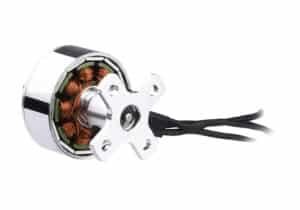Large coil winding machine_coil winding machine principle_coil winding machine jig improvement method: With the progress of science and technology and increasingly fierce competition in the market, the customer’s requirements for the motor has become higher and higher, such as high speed, low vibration, low noise, etc. has become a common requirement of the market, low speed high torque permanent magnet motor has also become the new development direction and market trend, which also puts forward higher requirements for the manufacturing process. In order to enhance the market competitiveness of the motor, it is necessary to further improve the quality of the motor components and process requirements. This paper describes the optimization improvement of the coil winding mechanism and its fixture for low-speed high-torque motors, which can not only improve the winding precision and enhance the quality of winding, but also reduce the labor intensity and improve the production efficiency while reducing the mechanical loss of the motor, which is applicable to the winding process of ordinary three-phase asynchronous motors.
Fábrica de bobinadoras

Bobina del estator
Motor coil here refers to the inductor, usually in the form of a ring-shaped wire winding, is wound one by one enameled wire on the winding die through the winding mechanism, the wires are insulated from each other, and the forming coil is formed; then the forming coil is embedded in the stator core, and it becomes a winding stator core. The quality of the formed coils directly affects the difficulty of the subsequent embedding process and the quality of the embedded wires. Improving the quality of coil winding can reduce the probability of insulation problems to ground and between turns, and improve the quality and reliability of the whole motor.
1 Original winding mechanism and its fixture
The original winding mechanism includes: wire release frame, winding machine, winding die and fixture. The winding die is put on the spindle of the winding machine, then the spacer is put on, then the lock nut is fastened in place, then the enameled wire is fixed on the winding die through the wire release frame, and then the winding machine is turned on. By rotating the winding die through the spindle of the winding machine, the enameled wire is wound into a formed coil. The number of rotating turns of the spindle is recorded by the dial of the winding machine.
The static friction with the rotating shaft to transmit the rotating torque. Once the tension is large, the winding die and the rotating shaft will be misaligned in the circumferential direction (commonly known as “slippage”), resulting in errors between the number of rotating turns read on the winding machine dial and the actual number of rotating turns of the winding die, thus causing errors in the number and length of the formed coils and seriously affecting the quality of the coils. Quality. In case of “slippage”, according to the process requirements, the whole enameled wire of the winding die needs to be dismantled, the winding die needs to be re-clamped, and the winding starts from the beginning again, which not only reduces the working efficiency, but also affects the passing rate of the coil winding in one delivery. In order to avoid the phenomenon of “slippage”, the operator will forcefully increase the torque of the locking nut, which not only fails to solve the fundamental problem, but also increases the labor intensity of the staff, aggravates the wear and tear of the fixture, and reduces the service life.
2 New winding mechanism and its fixture
In order to solve the above problems, the winding mechanism was studied and analyzed, and then a new winding mechanism and its fixture were designed through continuous verification and optimization.
WhatsApp/Wechat: +86 13075286997
Correo electrónico: sales@vacuz.com





